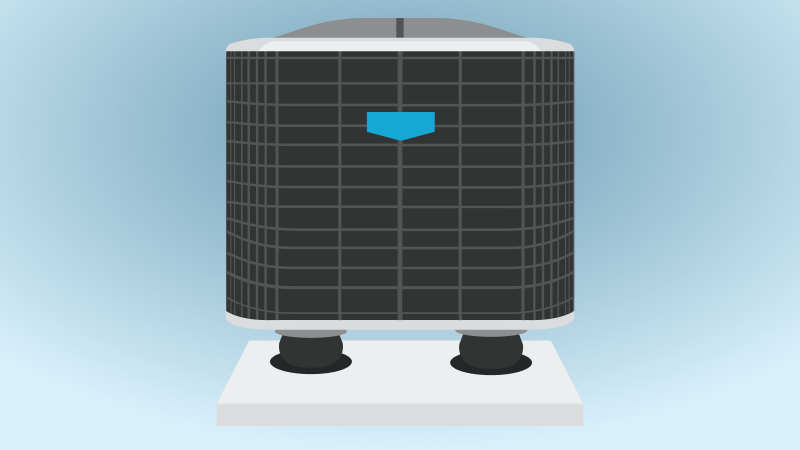-
Fact: While it’s true that lowering the thermostat saves energy, turning it off entirely means the heating system has to work harder when turned back on to reheat the home. Ultimately, this uses more energy.





Winter Energy Savings Tips
Efficient Ways to Stay Warm and Lower Your Energy Bills.
Winter weather can make it challenging to keep your carbon footprint low since you’re using more electricity to keep your home warm. You can use our energy efficiency tips for winter to make a few simple choices and manage your electricity bill.
It's Easy to Be "Winter Wise" All Season Long.
Conserve Energy With These Tips.
If you have an electric heating system, you could use just as much electricity keeping your home comfortable in the winter as you do in the summer with your air conditioner. Consider putting these habits into action to save as much energy as possible and potentially lower your energy costs.
Set your thermostat to 68°F or lower. For every degree below 68, you can expect to save about 3% on your heating costs. Dress in warm layers so you can stay comfortable while turning down the temperature. You can also set your thermostat to adjust lower at night while you’re asleep. For multi-level homes, remember that heat rises, so set the upstairs thermostats lower than their downstairs counterparts.
Adjust your fan so that it rotates clockwise. By setting your ceiling fans for cooler weather, you can help circulate warm air trapped near the ceiling, pushing it down to mix with cooler air below.
Remember the 4-by-4 rule. If you're going to be away for more than four hours, set the thermostat 4° lower. This strategy is effective for reducing heat in rooms that are frequently unoccupied, like guest rooms or offices on the weekend. You can also use a programmable thermostat to help automate these changes.
Unplug your electronics. Stop vampire power from draining your wallet by putting your electronics on a power strip and unplugging it or turning it off when not in use.
Charge your EV before the storm. If you have an electric vehicle, you’ll want to make sure it’s charged up in case of a potential outage.
Check your water heater. The ideal temperature for an energy-efficient water heater is 120°F. You should also consider insulating the water heater and nearby pipes to reduce heat loss, especially if the heater is in a cold or uninsulated area like a grage or basement.
Take shorter showers and install low-flow shower heads. This will help cut down on your hot water usage.
Seal doors and windows for heat retention. If your home is drafty, weatherstripping doors and caulking around windows could make a pretty big difference in your home’s temperature. If you’re renting, you can use plastic window film or insulated curtains to help keep the cold out and the heat in.
Know the difference between electric and natural gas heaters. While both heating solutions are viable solutions for staying warm, each comes with different ways to conserve energy.
- Gas furnaces require maintenance, such as filter replacements and duct cleaning in order to run efficiently.
- Electric heaters will draw quite a bit of power during the winter, so it’s important to manage their usage with a programmable or smart thermostat. Check your electric radiator model to ensure they that it is ENERGY STAR certified.
Winter Energy Saving Myths vs. Facts
-
Fact: Fireplaces can actually cause more heat loss. While they provide warmth near the fire, they often pull warm air from the rest of the house, especially if there’s no damper or the damper is left open.
-
Fact: Closing vents can cause pressure imbalances and make the heating system work harder to circulate air, which may increase energy consumption. It’s better to keep all vents open and ensure that the heating system is optimized for balanced airflow.
-
Fact: It’s more efficient to adjust the thermostat based on occupancy and sleep schedules. Using a programmable or smart thermostat can optimize heating schedules, automatically lowering temperatures when you’re away or asleep.
-
Fact: Space heaters can be efficient for heating small areas, but they can be costly if used extensively or in multiple rooms. It’s best to use space heaters in limited cases and only if they are energy-efficient models with automatic shut-off features.
Building Long-Term Energy Savings
Quick fixes are good when you want to save energy in a pinch. However, if you really want to know how to save energy in the winter, the best course of action is to consider the long game. The following broad strategies can help you save more energy over time and won’t leave you scrambling during the colder months.
Track your energy bills. Log in to your My Account to look at your energy usage and history. By monitoring your electricity usage, you can make informed decisions about how to you use energy and examine ways that lifestyle changes can alter your monthly bill.
Set energy-saving goals. Once you’ve gained an understanding of your typical energy usage, set yourself a limit and consciously try to not go over that goal each month.
Log habit improvements and adjustments. If you start a new energy-saving habit and notice it having a positive effect on your monthly statement, write it down and keep at it.
Evaluate energy efficiency annually. Compare your energy usage year-over-year to see how much money your efficiency habits have potentially saved you.
Consider long-term upgrades. A smart thermostat, energy-efficient appliances and permanent home improvements will extend your electricity conservation far beyond a single cold season.
Looking for More Ways to Live Green This Winter?
Staying green through the winter doesn't stop with saving energy. Wheather you're out in the cold weather or cozy at home, you can implement these eco-friendly suggestions to help yourself and the planet.
Green your mealtime with sustainable cookware.
Take your winter soups and stews to a healthier and more earth-friendly level.
Take care of your skin.
If your skin gets dry in cold weather, choose planet-friendly methods to keep it nourished and moisturized.
Green your winter clothes.
Did you know that some clothing fabrics are eco-friendlier than others? Add these 5 sustainable fabrics to your winter closet.
Start composting.
It’s a great way to help the planet, and it doesn’t have to be complicated. Here’s what you need to know to get started on your composting journey.
*Green Mountain Energy electricity customers who enroll in Ready, Set, Relax will receive a one-time $25 bill credit. It will be applied to the enrolled Green Mountain Energy electricity account within two billing cycles. This credit is not redeemable for cash. A Green Mountain Energy electricity account must be active at the time of the credit award to receive the credit.
Our customers have avoided
pounds of CO2
That’s like planting
new trees.

